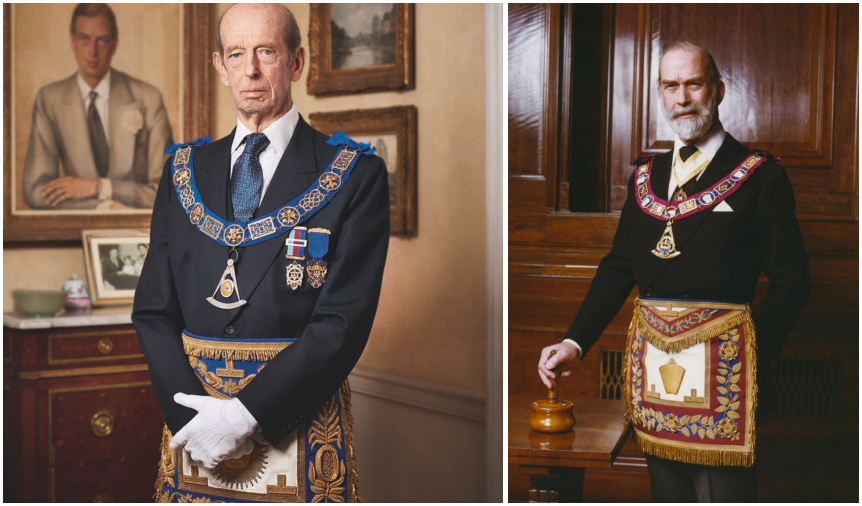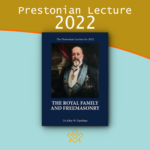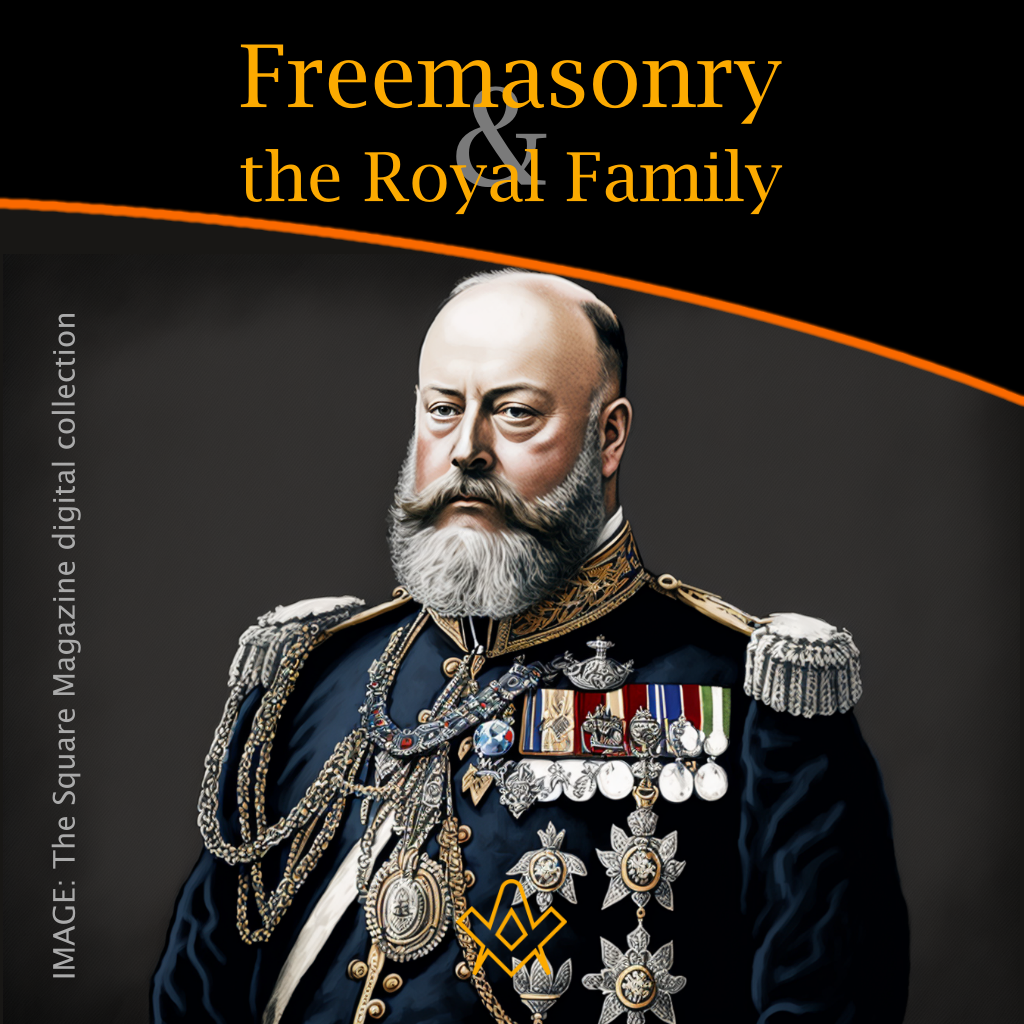In the annals of British history, Freemasonry occupies a distinctive place. This centuries-old society, cloaked in symbolism and known for its masonic rituals, has intertwined with the British Royal Family in fascinating ways.
The relationship between Freemasonry and the Royal Family is as complex as it is enduring, a melding of tradition, power, and mystery that continues to captivate the public imagination.
The Impact of Freemasonry on the Monarchy: A Two-way Street
Freemasonry’s influence on the British monarchy is not a straightforward narrative. It’s a story of mutual influence and shared values, where each institution has left its mark on the other over time.
Freemasonry’s principles of brotherhood, morality, and philosophical enlightenment resonated with many members of the Royal Family, who saw in it an embodiment of their own values.
This alignment was not accidental; Freemasonry sought to attract individuals of high social standing, and its principles were thus tailored to appeal to the nobility.
At the same time, the monarchy’s patronage of Freemasonry conferred prestige and legitimacy on the organization.
The very act of a monarch or a royal becoming a Freemason signified a tacit endorsement of the society’s ideals, bolstering its standing both in Britain and internationally.
However, the influence wasn’t unidirectional. Freemasonry’s ideals of equality and fraternity, where members meet “on the level,” may have subtly impacted royal perspectives on class and social responsibility.
The participation of royals in masonic rituals, where they interacted with members of various social standings, could well have influenced their outlook and actions in their official roles.
The Royal Family and Freemasonry: A History of Involvement
The British monarchy’s ties with Freemasonry date back to the 18th century, and over time, numerous royals have donned the Freemason’s apron.
One of the earliest royal connections was Frederick, Prince of Wales, who was initiated into freemasonry in 1737, and these royal-masonic bonds have persisted into the 21st century.
Notable among royal Freemasons was King Edward VII. Initiated into the brotherhood in 1868, he held various positions within the organization, including that of Grand Master of the United Grand Lodge of England. King George IV, and George III, were also Freemasons.

Left: HRH The Duke of Kent – Grand Master UGLE
Right: HRH Prince Michael of Kent – Grand Master Mark Masons
IMAGE LINKED: wikimedia Attribution 4.0 International (CC BY 4.0)
The present-day monarchy continues this tradition. The Duke of Kent, a first cousin to the late Queen Elizabeth II, has been the Grand Master of the United Grand Lodge of England since 1967, marking one of the longest tenures in the role.
Freemasonry’s Influence on Royal Governance and Diplomacy
While it’s challenging to quantify Freemasonry’s direct influence on royal governance and diplomacy, it’s plausible that the society’s emphasis on universal brotherhood and mutual aid had some impact.
These ideals could have subtly guided royal interactions with foreign powers, encouraging diplomacy and peaceful negotiation over conflict.
Furthermore, the international network of Freemasonry, with its lodges spread across the globe, might have served as an informal diplomatic channel, facilitating communication and understanding among different nations.
The Royal Family’s Influence on Freemasonry
Just as the monarchy was influenced by Freemasonry, so too did the royals leave their mark on the society.
Their involvement lent Freemasonry an air of respectability, attracting other high-ranking individuals to its ranks. The monarchy’s patronage also helped shield Freemasonry from public criticism and suspicion, contributing to its longevity and influence.
Moreover, the royal Freemasons often held leadership positions within the organization, allowing them to shape its direction and evolution.
For instance, the Duke of Sussex, serving as Grand Master in the early 19th century, with the assistance of his brother, the Duke of Kent, played a crucial role in the unification of rival masonic factions into the United Grand Lodge of England, a pivotal moment in British Freemasonry’s history.
The Enigma of Freemasonry: Rituals and Symbolism
The allure of Freemasonry lies not just in its historical significance or its influential members, but also in its rituals and symbols.
These practices, shrouded in mystery and rich in allegory, offer a glimpse into the society’s philosophical underpinnings.
Freemasonry’s rituals are essentially morality plays, conducted within each lodge’s meetings. They are intended to impart moral lessons to members, using the tools and language of the medieval stonemasons from whom the society draws its symbolism.
While the specifics of these rituals are closely guarded by the fraternity, known only to members, their influence extends beyond the walls of the lodge.
The values they instill — of fraternity, integrity, and enlightenment — are intended to guide Freemasons in their daily lives.
It’s plausible to assume that these rituals and their teachings had some impact on the royals who participated in them.
They may have influenced their worldview, their sense of duty, and their approach to their roles, adding another layer to the relationship between Freemasonry and the monarchy.
The Future of Freemasonry and the Royal Family: An Enduring Bond?
Looking ahead, the relationship between Freemasonry and the Royal Family shows no signs of waning. The society continues to attract royals, who see in it a tradition of service and brotherhood that aligns with their own duties.
However, both institutions are evolving to meet the demands of the modern world. Freemasonry, while holding fast to its rituals and principles, is striving to shed its image of secrecy and exclusivity.
The monarchy, too, is adapting, balancing its historical roles with the need to stay relevant in a rapidly changing society.
In this context, the intersection of Freemasonry and the monarchy presents a fascinating case of tradition meeting modernity.
As both institutions navigate the challenges of the 21st century, their shared history and values may serve as a compass, guiding them towards a future that honors their past while embracing the possibilities of the present.
Ultimately, the story of Freemasonry and the Royal Family is a testament to the enduring appeal of tradition, the power of shared values, and the intriguing interplay of influence. It’s a narrative that continues to unfold, captivating those who delve into its rich and intricate tapestry.
God save the King and the craft
Recent Articles: in this series

The Royal Family and Freemasonry
The Royal Family and Freemasonry – by Dr John W. Hawkins Delivery of the Prestonian Lecture 2022, which has been specially commissioned by Grand Lodge, being held in Quatuor Coronati Lodge on Tuesday 11th May at 4pm in Freemasons’ Hall, Great Queen Street, London.
more….

Lived Respected – Died Regretted
Lived Respected – Died Regretted: a tribute to HRH The Prince Philip, Duke of Edinburgh
more….

Royalty And The Craft
A brief history on the relationship between the British Monarchy and the craft – The Freemason’s Chronicle 20th March , 1875
more….
masonic knowledge
to be a better citizen of the world
share the square with two brothers

click image to open email app on mobile device







